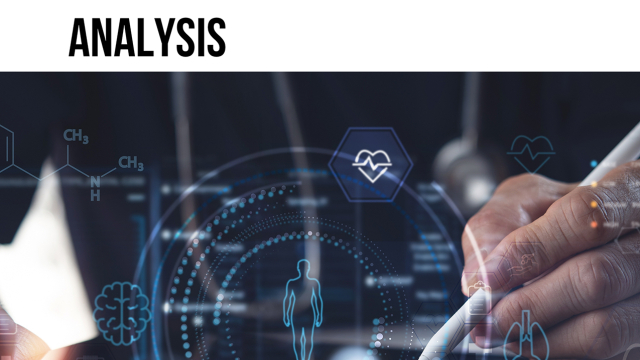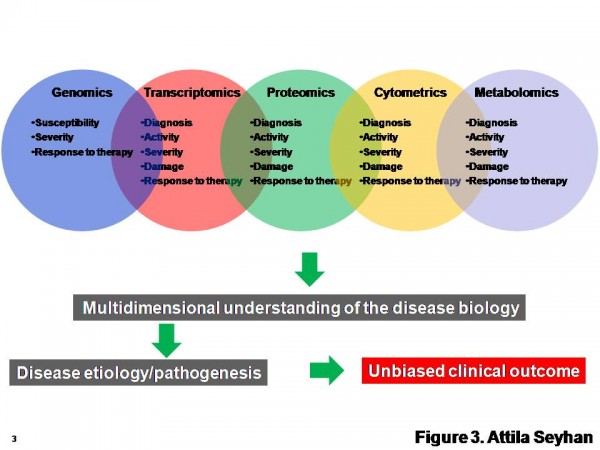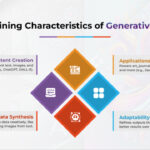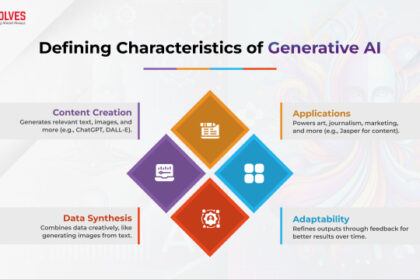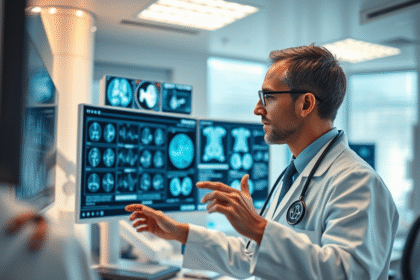Cancer remains one of humanity’s most formidable health challenges, with millions of lives lost globally each year. A stark reality persists: the earlier cancer is detected, the higher the chances of successful treatment and long-term survival. However, conventional diagnostic methods often face limitations in sensitivity, specificity, and scalability, leading to delayed diagnoses that can significantly impact patient outcomes. Enter Artificial Intelligence (AI) – a transformative force poised to revolutionize oncology, particularly in the critical domain of early cancer detection.
Imagine a future where a subtle cellular anomaly, invisible to the human eye, is flagged by an intelligent algorithm, or where a patient’s genetic predisposition is precisely quantified years before symptom onset. This future is rapidly becoming a reality thanks to the unparalleled capabilities of AI, machine learning, and deep learning. These technologies are empowering clinicians with advanced tools to analyze vast datasets, identify intricate patterns, and predict disease with unprecedented accuracy. From enhancing the interpretation of complex medical images to decoding the intricate language of genomics and liquid biopsies, AI is not merely assisting but fundamentally reshaping the landscape of early cancer diagnostics. This comprehensive guide delves into the groundbreaking applications of AI in oncology, exploring how these innovations are accelerating the journey towards a world where cancer is detected earlier, treated more effectively, and ultimately, overcome. Join us as we uncover the profound impact of AI on saving lives and improving the quality of care for cancer patients worldwide.
The Urgency of Early Cancer Detection: Why Every Moment Matters
The adage “time is of the essence” holds profound truth in oncology. Early detection of cancer is unequivocally the most powerful determinant of treatment success, patient survival rates, and overall quality of life. When cancer is identified at its nascent stages, it is typically localized, smaller, and has not yet metastasized (spread) to other parts of the body. This significantly increases the likelihood that treatments such as surgery, radiation, or chemotherapy will be curative.
Consider the stark survival differences across various cancer types. For instance, the five-year survival rate for localized breast cancer is over 99%, but it drops significantly to 30% once it has spread distantly. Similar patterns are observed in colorectal, lung, and prostate cancers. These statistics underscore a critical point: early detection transforms cancer from a potentially fatal disease into a manageable, often curable, condition. Despite advancements in medical science, many cancers are still diagnosed at advanced stages, largely due to the limitations of existing screening methods, the asymptomatic nature of early-stage disease, or barriers to accessing healthcare. This is precisely where AI steps in, offering innovative solutions to overcome these challenges and bridge the gap between late diagnosis and timely intervention.
AI’s Foundational Role in Modern Oncology: A Paradigm Shift
Artificial Intelligence encompasses a broad range of computational techniques designed to simulate human-like intelligence, including learning, problem-solving, and decision-making. Within oncology, AI’s power lies in its ability to process and analyze volumes of data that far exceed human capacity, identifying subtle patterns and correlations that might otherwise go unnoticed. This capability is particularly crucial in cancer, a disease characterized by immense biological complexity and heterogeneity.
The integration of AI in oncology represents a paradigm shift, moving diagnostics and treatment planning towards a more personalized, precise, and proactive approach. Machine learning (ML), a subset of AI, enables systems to learn from data without explicit programming. Deep learning (DL), a further subset of ML, utilizes neural networks with multiple layers to uncover intricate patterns in complex data types, such as medical images, genomic sequences, and electronic health records (EHRs). These technologies are not replacing human experts but rather augmenting their capabilities, providing an invaluable second opinion, automating tedious tasks, and uncovering insights that drive better clinical decisions. By leveraging AI, oncologists can enhance diagnostic accuracy, predict disease progression, and tailor therapies to the individual patient, ushering in an era of truly personalized cancer care.
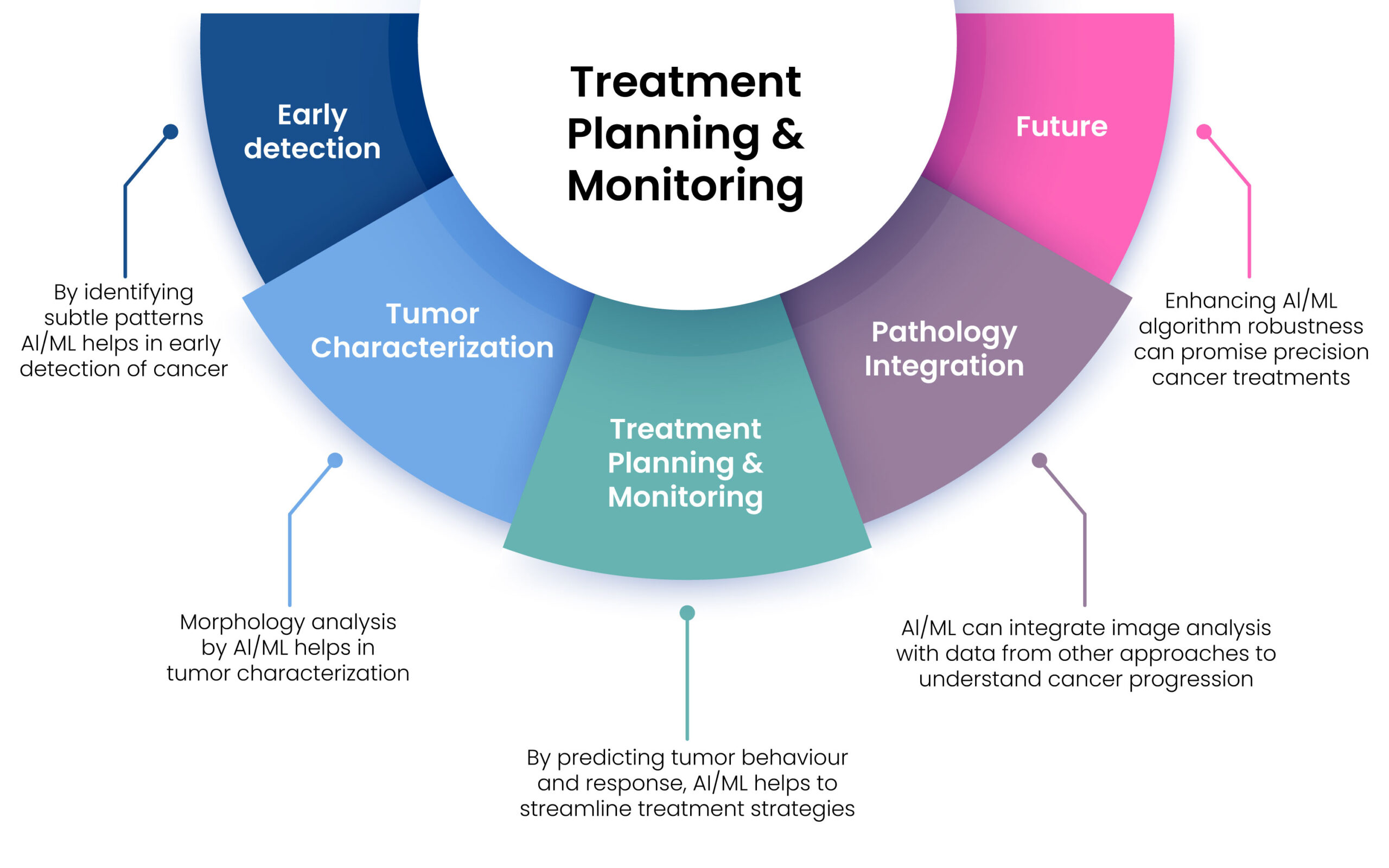
Key AI Applications for Early Cancer Detection
The potential of AI in early cancer detection spans numerous modalities, each offering unique opportunities to improve diagnostic accuracy and efficiency.
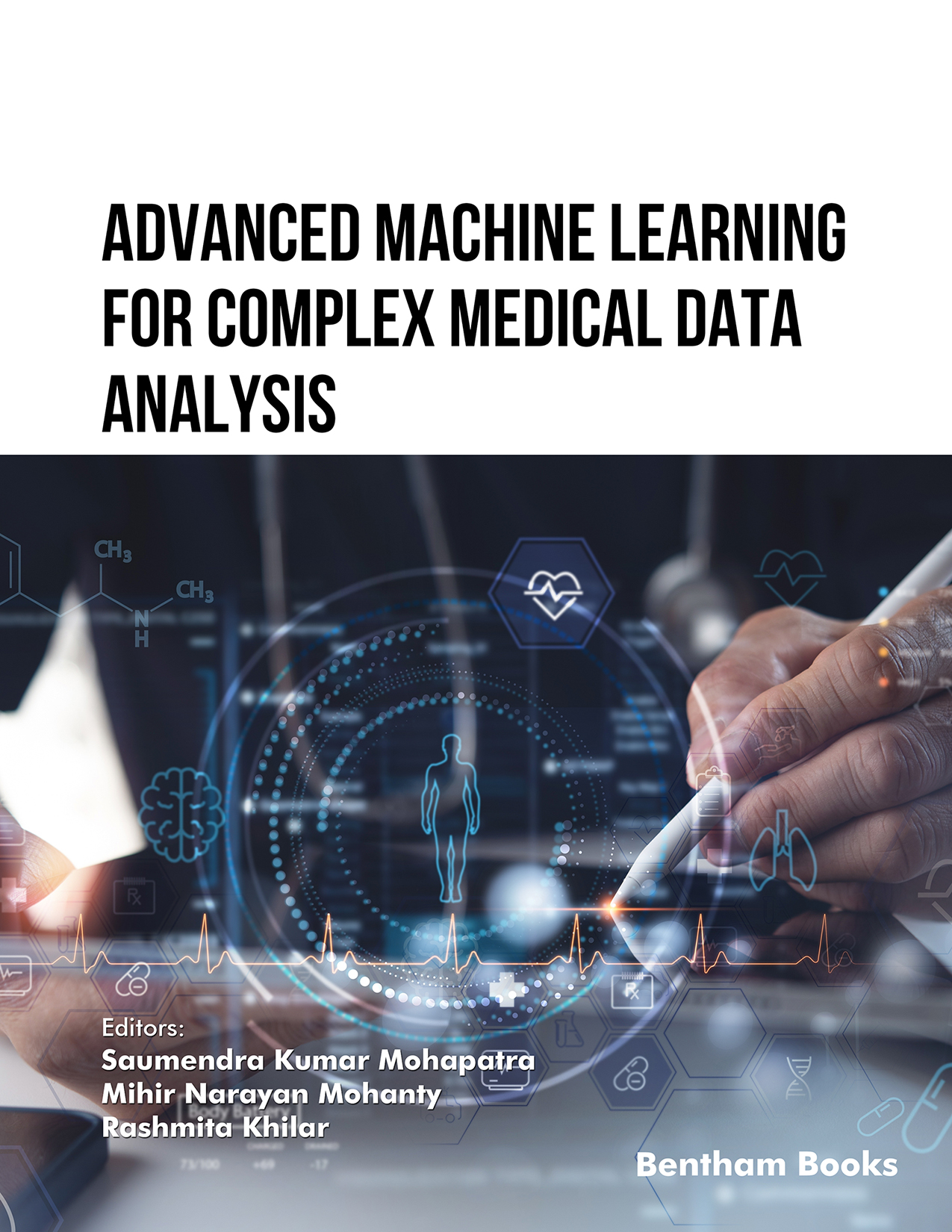
1. Advanced Medical Imaging Analysis with Deep Learning
Medical imaging—including mammography, CT scans, MRI, and PET scans—forms the cornerstone of cancer diagnosis. However, interpreting these images is a complex, time-consuming task requiring highly specialized expertise. Radiologists often face challenges in detecting minute lesions, distinguishing benign from malignant growths, and managing high volumes of screenings. AI, particularly deep learning, is revolutionizing this field by providing powerful tools for image analysis.
- Mammography and Breast Cancer Screening: Deep learning algorithms are trained on vast datasets of mammograms to identify suspicious areas with remarkable accuracy. They can detect subtle calcifications, architectural distortions, and masses that may be missed by the human eye, thereby reducing false negatives and improving the sensitivity of screening. Studies have shown AI systems to match or even exceed the performance of human radiologists in detecting breast cancer, often reducing the workload by automatically triaging cases.
- Example: Google Health’s AI model for mammography has demonstrated a reduction in false positives and false negatives compared to human radiologists in independent studies, showcasing its potential to improve screening outcomes.
- Internal Link Suggestion: Read more about “Innovations in Breast Cancer Screening” for a deeper dive into modern techniques.
- Image Alt Text Suggestion: “AI-powered mammography scan highlighting suspicious areas for early breast cancer detection.”
- Lung Cancer Screening (CT Scans): Low-dose computed tomography (LDCT) is effective for screening high-risk individuals for lung cancer. AI algorithms are being developed to automatically analyze LDCT scans, identify lung nodules, and track their growth over time. This helps differentiate benign nodules from potentially malignant ones, reducing unnecessary follow-up procedures and ensuring timely intervention for cancerous lesions.
- External Link Suggestion: For insights into AI’s role in lung cancer screening, refer to research published by the American Thoracic Society ATS Journals.
- Prostate MRI Analysis: In prostate cancer diagnosis, multiparametric MRI (mpMRI) is increasingly used. AI models can segment the prostate gland, characterize lesions, and assist in grading the aggressiveness of tumors, aiding urologists in targeted biopsies and treatment planning.
- Dermatology and Melanoma Detection: AI-powered applications analyze dermatoscopic images of moles and skin lesions, assisting dermatologists in identifying melanoma and other skin cancers at very early stages. These tools can achieve diagnostic accuracy comparable to, or sometimes surpassing, that of experienced dermatologists.
- Automated Slide Analysis: Deep learning algorithms can analyze high-resolution digital pathology slides to identify cancerous cells, grade tumors, quantify specific biomarkers, and detect micrometastases in lymph nodes. This automation significantly reduces the burden on pathologists, accelerates diagnosis, and improves consistency.
- Key Takeaway: AI in digital pathology enhances diagnostic precision and efficiency, leading to faster and more consistent cancer diagnoses.
- Tumor Heterogeneity and Margin Assessment: AI can meticulously analyze the spatial distribution of different cell types within a tumor, offering insights into tumor heterogeneity, which is crucial for predicting treatment response. It can also precisely delineate tumor margins during surgery, helping surgeons ensure complete removal of cancerous tissue.
- Predictive Biomarker Detection: Beyond basic classification, AI can identify subtle morphological features indicative of specific genetic mutations or protein expressions, acting as predictive biomarkers for targeted therapies. This capability moves pathology closer to personalized medicine.
- Internal Link Suggestion: Explore the future of “Precision Medicine in Oncology” and how AI plays a role.
- Mutation and Gene Expression Analysis: AI algorithms can analyze whole-genome sequencing (WGS), whole-exome sequencing (WES), and RNA sequencing (RNA-seq) data to identify specific genetic mutations, gene fusions, and altered gene expression patterns associated with various cancers. These molecular signatures can serve as early warning signs.
- Biomarker Discovery: Machine learning models can correlate genetic profiles with clinical outcomes, discovering new biomarkers that predict cancer risk, aggressiveness, and response to specific treatments, even before clinical symptoms appear.
- Example: Researchers are using AI to identify specific epigenetic markers (e.g., DNA methylation patterns) in blood samples that can indicate the presence of certain cancers, such as colorectal or lung cancer, at very early, asymptomatic stages.
- Pathway Analysis and Network Biology: AI can map complex interactions between genes and proteins, revealing dysregulated biological pathways characteristic of cancer initiation and progression. This understanding is vital for developing targeted prevention strategies and early diagnostic tests.
- Enhanced ctDNA Detection: Circulating tumor DNA (ctDNA), fragments of DNA shed by tumor cells into the bloodstream, is a highly promising biomarker for early cancer detection. AI algorithms are being developed to improve the sensitivity and specificity of ctDNA detection, distinguishing tumor-derived DNA from normal circulating DNA. This is crucial for identifying minimal residual disease and recurrence.
- Quotable Statement: “Liquid biopsies, powered by AI, are paving the way for a future where a simple blood test could detect cancer years before traditional methods.”
- Multi-omic Liquid Biopsy Integration: Beyond ctDNA, liquid biopsies can analyze circulating tumor cells (CTCs), exosomes, and various proteins. AI can integrate data from these multiple “omics” sources to build a more comprehensive and accurate profile of a patient’s cancer status, enhancing early detection capabilities.
- Early Recurrence Monitoring: For patients who have undergone treatment, AI-driven liquid biopsies can monitor for early signs of cancer recurrence, often detecting it months before radiological imaging can. This allows for earlier intervention and improved prognosis.
- External Link Suggestion: Explore the latest research on liquid biopsies from reputable sources like the National Cancer Institute NCI.
- Population-Level Risk Assessment: By analyzing anonymized EHR data from millions of individuals,

2. Digital Pathology and Histopathology Enhancement
Pathology is the gold standard for definitive cancer diagnosis, involving the microscopic examination of tissue samples. The shift from glass slides to whole-slide imaging (WSI) has paved the way for digital pathology, making it an ideal domain for AI integration.
3. Genomic and Proteomic Data Analysis for Biomarker Discovery
The advent of high-throughput sequencing technologies has generated an unprecedented amount of genomic and proteomic data, offering profound insights into the molecular underpinnings of cancer. AI is indispensable for sifting through this “big data” to identify novel biomarkers for early detection and risk stratification.
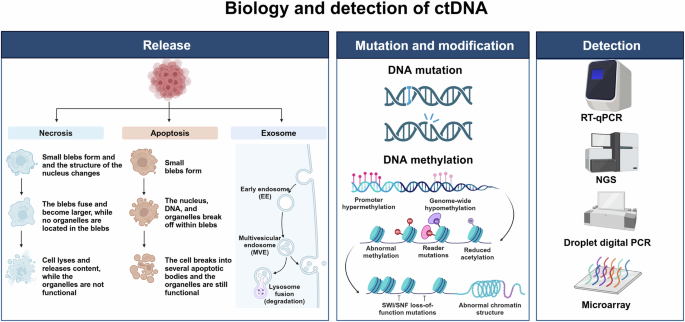
4. Liquid Biopsies and Circulating Tumor DNA (ctDNA) Analysis
Liquid biopsies represent a non-invasive approach to cancer detection, involving the analysis of biological fluids (like blood, urine, or saliva) for cancer-related biomarkers. The minute quantities and fragmented nature of these biomarkers make their detection a perfect challenge for AI.
5. Risk Stratification and Predictive Models
AI can leverage vast datasets from electronic health records (EHRs), patient demographics, lifestyle factors, and genetic information to build sophisticated predictive models for cancer risk assessment.


